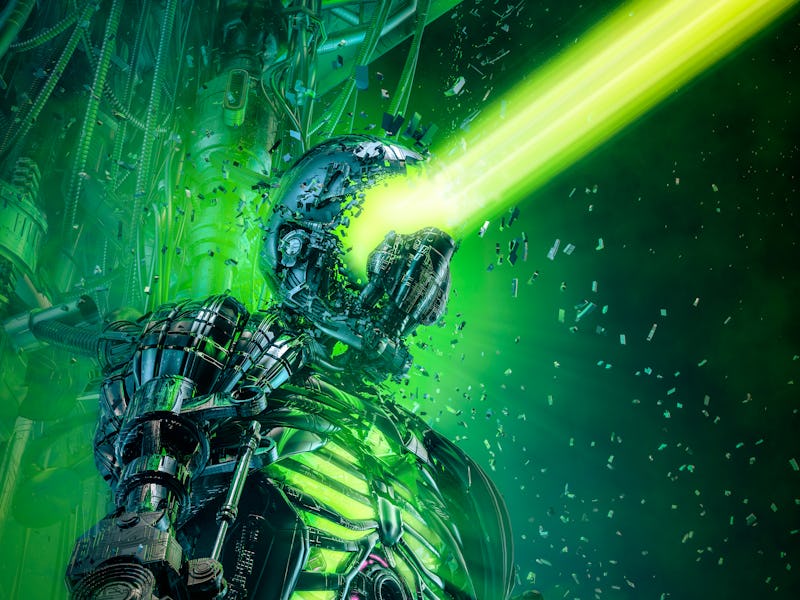You need to watch the most daring sci-fi sequel ever before it leaves Netflix next week
Save the future in the present.

In today’s world, sequels to science fiction movies are often just as good, if not outright better, than the first film in a series. This wasn't always the case. Famous examples like Star Trek II, Aliens, and The Empire Strikes Back were exceptions to the rule of forgotten trash like The Fly II and Highlander II: The Quickening. The idea that a sequel could completely eclipse its predecessor was even rarer... until the release of Terminator 2: Judgement Day.
Much can be said about why Terminator 2 is a classic, and much of that praise tends to focus on the brilliant reversal of the first film. This time out, Arnold Schwarzenegger’s T-800 is helping the heroes instead of hunting them. Thematically, this would be like if Aliens had Ripley teaming up with the Xenomorph from Alien to fight some different and even worse aliens.
It seems obvious now because it happened and it worked, but in 1992 there was no particular reason to believe that audiences would connect with the lifeless, murderous T-800’s transition to hero and protector. If you watch the 1985 original, you’ll notice that everything about Schwarzenegger’s performance is inhuman. It’s a slasher movie with a robot. So making the monster a good guy in the sequel was a risk.
Riskier still is the shocking amount of time — seven years — that had passed between The Terminator and Terminator 2: Judgment Day. By the time T2 came out, the sci-fi movie landscape was completely different. None of the sci-fi franchises that had dominated the ‘80s were doing much by the early ‘90s. Star Wars was long over. Alien 3, which came out the same year as Terminator 2, was a critical flop. The Superman films had petered out, Back to the Future was done by 1990, and even the omnipresent Star Trek film franchise took a break between 1991 and 1994.
Arnold Schwarzenegger, Linda Hamilton, and Edward Furlong in T2.
T2 came at the right time, but we only know that in retrospect. And that's because when it comes to sci-fi sequels, there’s before T2, and there’s after. From its opening moments to its memorable last scenes, what made it special is that everyone who missed the first film (a lot of people!) didn’t need to see it to understand the sequel.
Because Linda Hamilton narrates the opening and explains what’s going on with the future machine apocalypse, the movie both reboots the premise of the first film and makes the stakes identical. In both films, the machines want to go back in time and eliminate John Connor before he can become the leader of the human resistance. In the first film, that meant trying to murder his mom, Sarah Connor (Hamilton), but in T2 that means trying to murder a young John (Edward Furlong).
Terminator 2 uses the exact same storyline as Terminator 1, but makes it far more accessible. Instead of a brooding slasher movie starring a time-traveling robot assassin, T2 is about a kid and his best friend. The best friend just happens to be a reprogrammed time-traveling robot assassin.
Linda Hamilton and Arnold Schwarzenegger at Cannes, 1992.
Yes, T2 is R-rated like its predecessor, but when contrasted with the first film it feels closer to PG-13. The Terminator wasn’t a movie that wanted you to like it. It wanted to shock you, scare you, and get out. T2 took the same idea but expanded the palette to include all sorts of concepts the previous film never would have touched.
So yes, T2 is great because of its stunts, because of its performances, because of its pacing and its still impressive special effects. But its greatest achievement is that, in almost every meaningful way, it’s a sequel that’s also a remake. A sci-fi franchise had never pulled off this specific trick, and no one has ever really done it again.
You can watch Terminator 2: Judgement Day on Netflix until February 28.
This article was originally published on